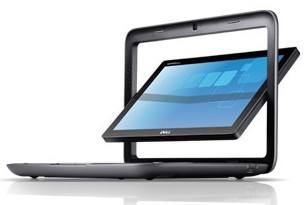This morning at breakfast I sat across the table from an older gentleman in an Air Force flight suite. He was eating his cereal, drinking his coffee and playing with his iPad. I don’t often see older men in flight suites using an iPad so I felt compelled to strike up a conversation. I simply asked him what device he was using and what he was doing with it. I find that it’s better to play dumb in situations like these as people tend to open up a little more.
Anyway, I found his responses fascinating. He said that he uses his iPad in the cockpit of his aircraft to replace an “entire bag full of papers and booksâ€. He was using an application to file his flight plan, check the weather, handle some flight calculations and review his “alternate†landing sites. In addition he was reading the New York Times and checking his email all while enjoying breakfast.
We talked a bit about the features of the iPad and how he liked it. He indicated that he used to have an iPhone and thought it was similar enough that he didn’t have much of a learning curve.  Before leaving he finished up the conversation by saying “it lets me keep everything in one place†before turning back to finish his meal.
The short conversation got me thinking about the often overlooked value of the new generation of tablet design. In this case it was an iPad, but it could have been an Android device, BlackBerry PlayBook, or HP TouchPad. Three things struck me:
First – The importance of the tablet form factor. Everything the gentleman was doing on his iPad could have easily been done on any computer. However, during our conversation he said that he used to use a laptop in the cockpit, but found that it was awkward. He liked the form factor of the iPad much better. Slate tablets are lighter, smaller and have better battery life. It’s hard to beat that combination of features for quickly viewing information.
Second – Standardized user interface and user experience. The fact that his learning curve for the iPad was improved by his previous use of an iPhone didn’t escape my attention. Android smartphone and tablet manufacturers should make note of this. The current trend with Android tablets is to create a customized user interface that overlays the “stock†Android UI. As cool as I think the aftermarket user interfaces are, they have the potential to create a bit of a dilemma for the end user. Keep it standard across the board boys and girls. From what I’ve seen of the TouchPad it looks like HP is trying to keep the experience similar across its line of devices.
Finally – Availability of key pieces of software and applications. Consuming information on a mobile device certainly took center stage for this gentleman as he was using his iPad to take the place of more than one item that he previously carried in his bag. It’s hard to say if all tablet manufacturers will have enough software and applications to make their devices as compelling as the iPad. Only time will tell.
When our conversation was over and the gentleman had finished his cereal he simply picked up his coffee cup in one hand, his iPad in the other and walked out the door. I suppose that just about sums up the value of utilizing technology in a mobile form factor.


